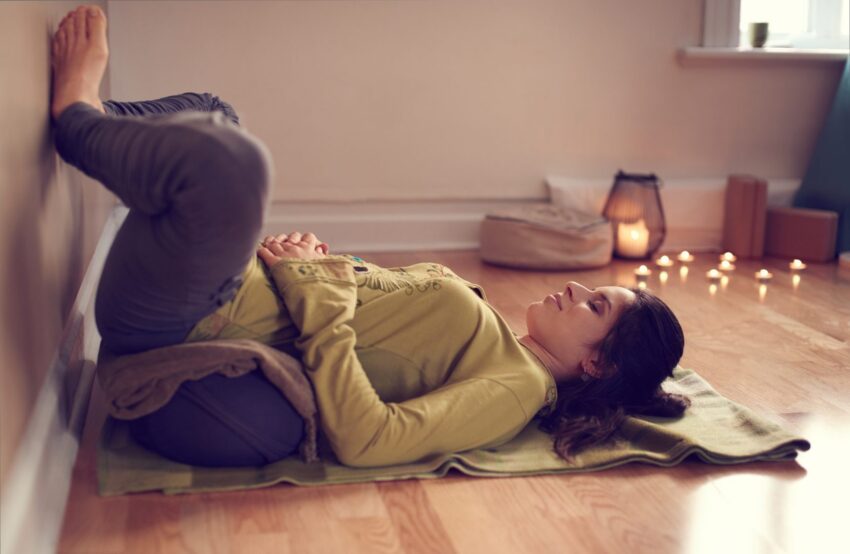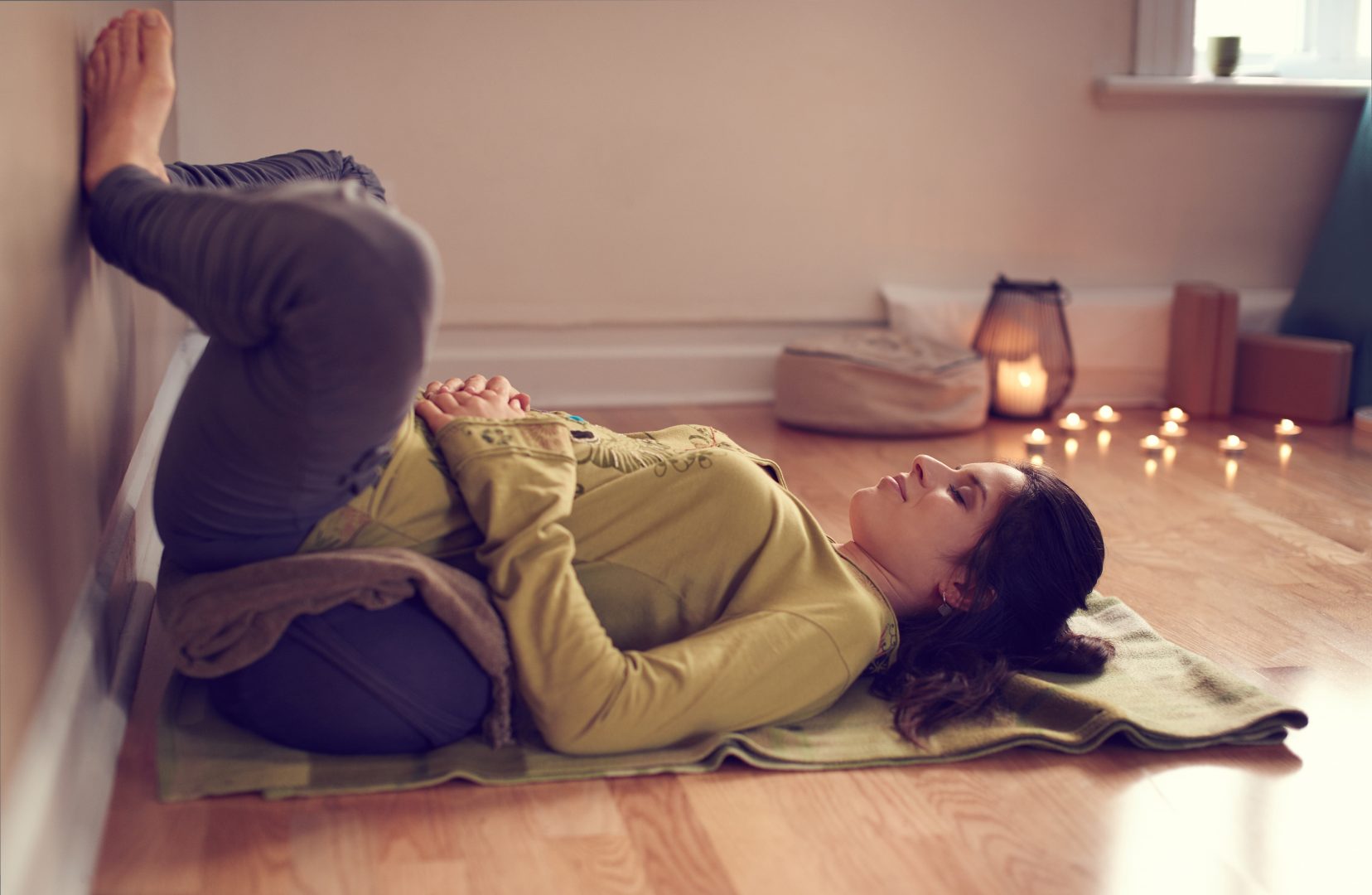Q1: What is restorative yoga and why is it different from other types of yoga?
Restorative yoga is a type of yoga done lying down that involves no active movement or muscular engagement. With the support of yoga props like blankets, bolsters, and foam blocks you’ll lay in various supine poses designed to help you lightly stretch while relaxing comfortably. You might practice five to ten poses in each session where each pose may be held anywhere from 5-25 minutes.
Q2: Would a person suffering from chronic pain, like back pain, benefit from restorative yoga? How about other kinds of yoga?
This type of yoga can be truly transformative for people who suffer from general back pain and stiffness. Many people experience immediate relief from practicing these supported reclining poses. I’ve also heard students say afterwards that they’ve “never felt so relaxed” and I have many emails telling me how the next day they “had so much energy!” Relaxing this deeply can often be more restful than sleep, although it’s no substitute.
With those who suffer chronic back pain caused by injuries or particular conditions, it’s important to remember that some of the poses may need to be modified so as not to exacerbate or aggravate the injury. It’s important to work with an experienced yoga teacher or yoga therapist if you have special conditions or injuries.
Q3: What are the benefits of yoga for back pain and chronic pain in general?
Two in particular stand out among many. Yoga helps to build postural stability by both strengthening and lengthening the muscles that support the spine. By developing strength and flexibility, you can put yourself in a better position to avoid back pain. The second benefit comes from the physical and mental relaxation practiced during restorative yoga. When you learn to calm your mind and relax your body, there is an almost immediate response from the nervous system and that promotes the body’s own healing and repair. Will it reverse all your chronic pain? Unfortunately it’s not magic, but your day to day discomfort may be significantly reduced.
Q4: Could someone with back pain try other forms of yoga?
Absolutely. It’s important when looking for a yoga class to find a style and a class level that is right for you. Even though you may be very physically fit, it’s crucial to start at a beginner’s level because learning yoga is like learning a whole new language – even though you know how to make sounds, you won’t be able to just jump in and speak fluently. You have to start from the beginning.
There are so many styles out there so it’s best to find one that is alignment-based and focused on form. Anything that’s for beginners or labeled “gentle yoga” is best. Avoid styles such as Ashtanga, Hot Yoga (or Power Yoga), Vinyasa Flow, and Bikram Yoga as they can be very physically strenuous and cause injury for beginners.
Q5: What would be the best restorative yoga poses for back pain?
My favorite is one I do at home called “Legs Up The Couch” pose. Lie down on the floor and place your legs up and over the couch so that they are elevated. Make sure your entire back is touching the ground and the backs of your legs below the knee are touching the seat of the couch. Your legs should be bent no more than 90 degrees. Relax your head on the floor or a pillow and relax your arms along your sides. Free yourself from any distractions like cell phones or television. Even ten minutes in this position on a daily basis can bring significant relief.
Q6: Is this a good option for people who have undergone spinal surgery?
Many yoga students have had spinal surgery and are OK’d by their doctors to practice gentle yoga. It’s important to ask your health professional first and notify your teacher about your recent surgery so s/he can make any modifications for you, as necessary. Once your doctor says it’s OK, it’s best to listen to your own body and choose when it’s right for you to begin.
Q7: For those told by medical professionals to get in better shape to help their spinal health, would restorative yoga be sufficient in doing that?
While restorative yoga can bring relief to some back pain and help alleviate stress and develop body awareness, a more active style of yoga would be best to help improve spinal health. Pilates is another wonderful physical activity that is specifically designed to strengthen postural muscles and support a healthy spine. Working privately with a yoga or Pilates instructor is the best option for those with special conditions as it can be tailored to fit your needs.
*Rebecca Bly is a Wellness Coach and Yoga Teacher in Washington, DC. She teaches Restorative Yoga once monthly at The Center in Tenleytown and also works privately with those who want to improve their balance, focus, and strength. She teaches regular weekly yoga classes to a variety of levels at Circle Yoga in Chevy Chase, DC.
**If you do not live in the DC metro area and want to try a restorative yoga class, visit www.restorativeyogateachers.com to find an instruct tor in your area.




